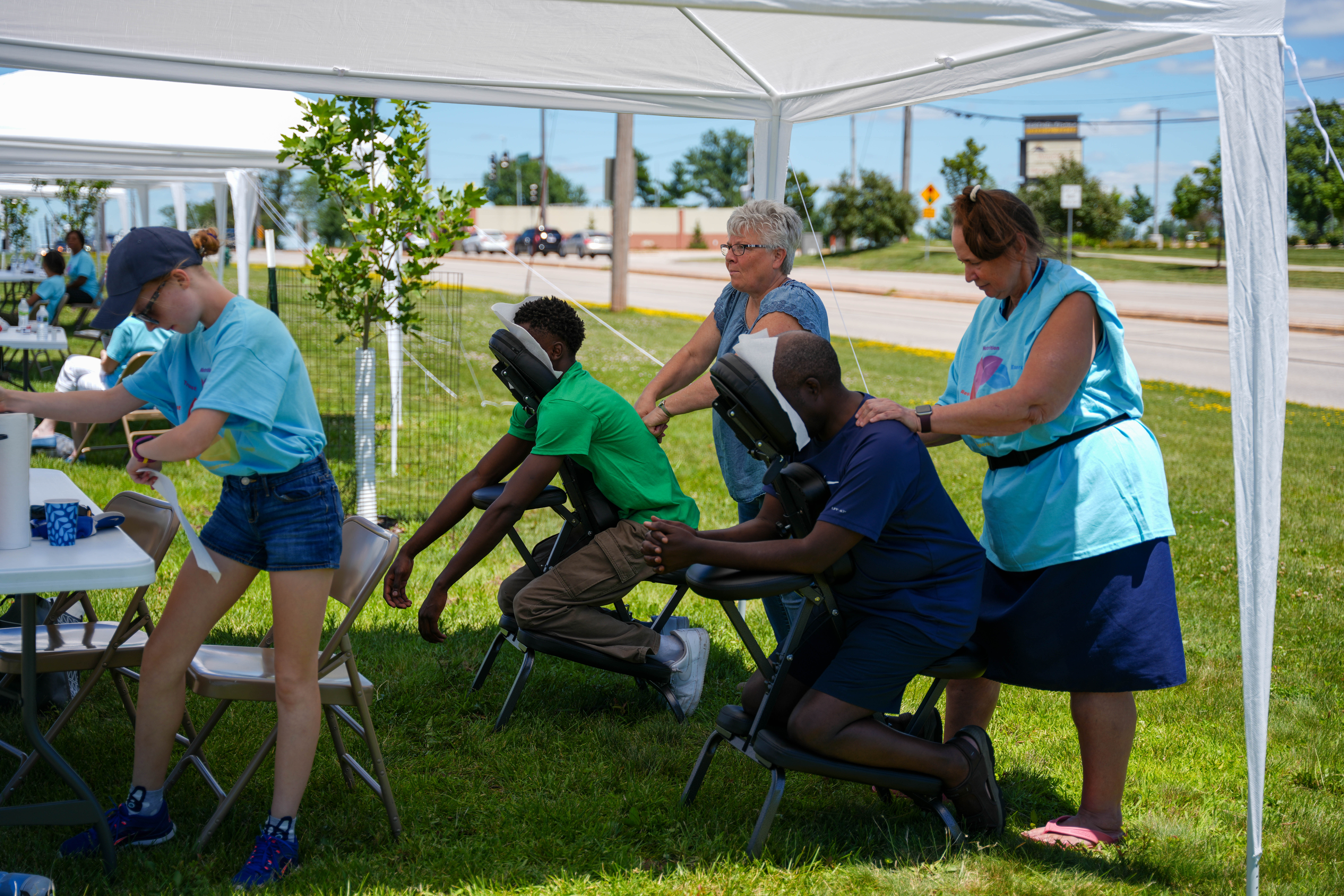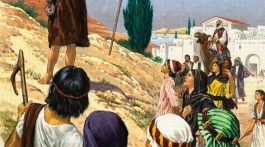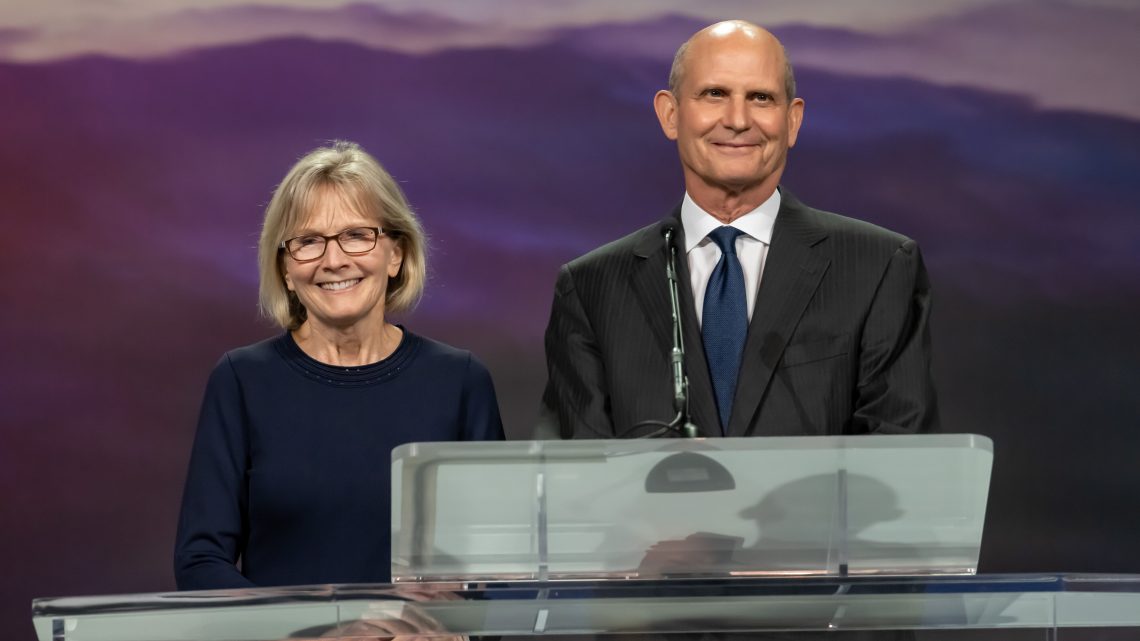Over 2,000 delegates to the 61st General Conference of Seventh-day Adventist’s Constituency Session gathered from around the world in person on Monday, June 6, 2022, in St. Louis, Missouri, to begin the process of conducting business for the Seventh-day Adventist Church. The approximately 400 delegates unable to attend in person are participating virtually for the first time in the history of the church.
The GC Session, usually held every five years, is the largest official denominational meeting in the world. Every union conference selects and sends a specified number of delegates based on membership numbers to represent more than 21 million church members from over 200 countries. Approximately 6% of the delegates are representing North America.
This year’s session themed Jesus is Coming! Get involved! is being hosted at the America’s Center Convention Complex where leaders and delegates are gathered for six days to engage in discussing, reporting, voting and worshiping together. This session has been delayed twice due to the global pandemic, but is now proceeding with the allowance of virtual participation, as voted during a specially called GC session at church headquarters last January.
The Voting Begins
Following opening preliminaries, the first order of business was selecting a GC president. Delegates voted by a margin of 1284 (74.9 %) to 431(25.1 %) to re-elect Ted N.C. Wilson as president of the General Conference until the next session in 2025. Wilson has held the position since 2010.
“Delegates were trained in advance on how to use the electronic voting system. The ElectionBuddy system is secure, anonymous for all delegates, it’s been tested in advance, and we have every reason to believe it’s working properly,” said Mid-America Union president Gary Thurber.
Who Gets To Vote?
Delegates representing each union conference/mission are selected by their executive committees from a percentage of its total membership. Of the 2,566 delegates who attended the 60th session in San Antonio, Texas, 16% were under the age of 40, and 17% were female. Demographic stats for 2022 are not currently available, but it seems very likely that the average delegate profile continues to be a male over age 45.
Mid-America’s 16 delegates have been carefully chosen based on their track record of experience and service, while still achieving the minimum ratios required by the GC of gender, race and lay member or church employee.
- Roger Bernard, president, Central States Conference
- Ron Carlson, president, Kansas-Nebraska Conference
- Dean Coridan, president, Iowa-Missouri Conference
- Alejandro Dovald, pastor, Lincoln Hispanic Church (NE)
- Delvin Hansen, member, Harvey Church (DA)
- Debbie Jackson, member, Denver Park Hill Church (Central States)
- Sharmani Long, member, Franktown Church (CO)
- —, president, Minnesota Conference
- Cynthia Mochama, member, The Way Church (MN)
- Hubert Morel, vp for administration, Mid-America Union
- Abelardo Rivas, pastor, Multicultural Church for the Community, (MO)
- Vinita Sauder, president, Union College
- Gary Thurber, president, Mid-America Union
- Mic Thurber, president, Rocky Mountain Conference
- David VandeVere, vp of finance, Mid-America Union
- Mark Weir, president, Dakota Conference
Only delegates and invitees are allowed voice during business sessions and only delegates may vote.
How is voting being conducted?
2015 was the first year GC delegates used hand held electronic voting devices (clickers) instead of holding up cards to be counted. Delegates to the 2022 session are voting entirely electronically, including virtual delegates who are using their smartphones to vote. All the delegates from around the world vote Yes of No for each name that is presented by the nominating committee.
How does the GC Session Nominating Committee Work?
Since the first founding session of the Seventh-day Adventist Church in Battle Creek, Michigan, in May 1863, the Adventist Church has relied heavily on the democratic process of electing its leaders.
The GC president, who must be an ordained minister according to our constitutional bylaws, is elected first, then the GC executive secretary, treasurer, and up to 10 vice presidents, followed by 13 division presidents as extensions of the GC. This process, which requires vast amounts of time for the nominating committee, determines not only the church’s main officers but well over 100 other positions.
The nominating committee is formed by the delegates from each division/attached union meeting together and selecting 10 percent of their group to serve on the nominating committee. Delegates at large (delegates due to the GC positions they hold) select eight percent of their group to serve. Around 250 people serve on the nominating committee.
1) Each division delegation acts as a unit in selecting the representatives to which it is entitled. It is customary for union presidents to be elected to serve on this committee, particularly if the union is entitled to only one representative.
2) Election to the nominating committee is done by the method of voting considered by each delegation to be most convenient and efficient. This year some divisions met virtually before delegates arrived in St. Louis.
3) No delegate may nominate more than one person for election to the nominating committee.
4) Once established, the nominating committee elects its own chair and secretary under the temporary chair of the GC president whose term is expiring.
5) In order to expedite the work of the nominating committee, representatives from each division meet together and consider the personnel needs of their respective divisions and then make recommendations to the full nominating committee. Decisions of these groups are not binding; they are only recommendations.
6) The GC president is elected by all the delegates first, then joins the nominating committee to offer recommendations on all the other nominations, which the committee may choose to accept or reject.
7) It is traditional practice for the nominating committee to consider incumbents first, and then to bring only one name at a time for each position (including president) to the delegates, who either approve the name or send it back to the committee.
What Does the GC President Actually Do?
Although the constitution of the General Conference does not give formal job descriptions for its officers, it states that it is their duty to “carry forward the work according to plans and programs voted by the General Conference in session and according to plans and policies agreed upon by the Executive Committee” (GC Working Policy, p. 7).
Specifically, the president or his designee shall:
- Preside at the session of the General Conference
- Act as chair of the Executive Committee
- Serve in the general interest of the General Conference as the Executive Committee shall determine
- Perform such other duties as usually pertain to such office
The president is also a public representative of the church during his extensive travels. “He meets with heads of state and religious and civic leaders,” said Ray Dabrowski, currently communication director for the Rocky Mountain Conference, who for 16 years assisted General Conference presidents in their communication ministry.
It is sometimes thought that the GC president possesses line item authority over all the different parts of the church, but that is not the case. Although the General Conference, as a constituent unit, does have a single president, the church does not.
In fact, within the structure of the church there are hundreds of “presidents” who serve its various conference and union constituent segments. Ellen White said: “God has not set any kingly power in the Seventh-day Adventist Church to control the whole body or to control any branch of the work” (Testimonies for the Church, vol. 8, p 236).
GC authority is limited to actions that are within its jurisdiction. Determining exactly which matters are and are not in its jurisdiction is not always simple, except to say unequivocally that the definition of denominational beliefs is entrusted to the General Conference in business session.
While the process of selecting our leaders and identifying the scope of their authority is neither perfect nor easy, we can continue learning from our past and looking toward the future in determining the best course of action for today.
Following his re-election, Wilson, age 72, said, “I pledge myself and ask that you pledge, along with me and with Nancy that we will unitedly proclaim this amazing Advent message to get involved because Jesus is coming soon.”
During our church’s founding session 159 years ago, the 20 representative delegates elected as their temporary chair Jotham Aldrich (age 35) and secretary Uriah Smith (age 31). Adventist historian David Trim reports in his article “The Spirit of ’63” that historical records show many of our church founders were young and pragmatic (June 2015 Adventist World, p. 31).
Below are the ages, when first elected, of the first seven GC presidents (yes, four names but seven presidencies).
John Byington: 65
James White: 44
J.N. Andrews: 38
G.I. Butler: 37
Statistics clearly show that the Seventh-day Adventist Church is aging, particularly in the Northern Hemisphere. The question is, What are we doing to mitigate the leadership vacuum as our current administrators, pastors and teachers retire en masse?
Lay pastor and OUTLOOK blogger Ed Dickerson points out that “when our church was first organized we thought we were sprinting toward the finish line. Then we realized we might be running a marathon. Now, over 150 years later, we know that it’s actually a relay race and our job is to pass the baton.”
Mentoring and succession planning is more important now than ever for the health of the Adventist Church. So is inviting and empowering young adults to accept leadership roles.
How can I get more updates?
Watch the live stream at www.gcsession.org or sign up for myOUTLOOK e-news, a free email newsletter produced by the Mid-America Union communication team that will be sent daily during the session (you may unsubscribe at any time).
The church’s official news reporting is through Adventist News Network.
For a Mid-western perspective, visit OUTLOOK’s website or follow us on Twitter, Facebook and Instagram (hashtag #gcsession) for daily session updates and photos of people you may know.










